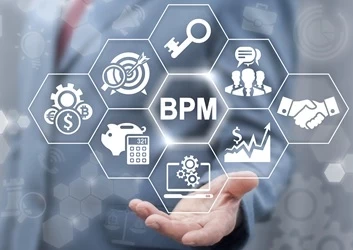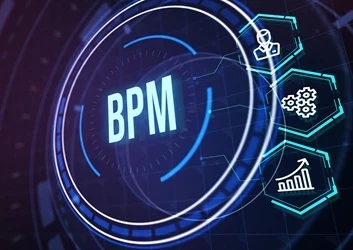Pegasystems' CEO Alan Trefler on the past, present and future of BPM (Transcript)
Add bookmark
|
"BPM provides a place where business people can take control of their processes," says Alan Trefler, CEO and founder of BPM Software vendor Pegasystems. Trefler should know, as he founded his company in 1983 - before BPM was ever uttered as an acronym. In this PEX Network interview Trefler discusses the evolution of the BPM industry, his thoughts on where the industry is going next and overcoming the trouble with legacy systems. He also explains how his background in tournament chess inspired his interest in computers. This is a transcript of a recent podcast. To listen to the original podcast, please click here. Please note: the transcript has been edited for readability. |
BPM is like a chess game? |
PEX Network: Your biography says that your interest in computers came from your involvement in tournament chess; what’s the connection there?
Alan Trefler: I played chess very seriously when I was in college and was the co-champion of the World Open when I was a sophomore. Having done that, I very quickly learned that I could not earn a living playing chess, so I looked around for other things.
There was an effort at Dartmouth, where I went to school, to try to teach computers to play chess. This was before the era where they attacked the problem with brute force. They wanted people like me – a chess master – to help instruct the computer in how to evaluate and understand the process of making good chess moves.
That was a wonderful opportunity because it informed my desire to become a software engineer and computer programmer. It also sowed the seeds for what later became Pegasystems, as we took a lot of the principles of how you would teach a computer to be able to do something sophisticated and rules-based but also intuitive and then apply that in a business setting.
PEX Network: That’s interesting, because you actually founded Pega back in 1983 before things like Six Sigma and Lean had become mainstream. How did you end up specialising in what must have been at the time, the little-known discipline of business process management?
Alan Trefler: In that era, business process management went by some other names and it was not well understood. However, in many ways I don’t think business process management is well understood even today.
There had been some work by some pioneers, like Edward Deming, who had looked at how you can combine an understanding of numbers and statistics, how you can evaluate process steps, and how you can attempt to achieve process excellence in a variety of ways.
Those principles were the foundation of the creation of Pega. The interesting thing about Lean and BPM, for example, is that a lot of our customers find that they can use our technology to implement a continuous improvement culture. With our technology, we provide you the ability to both understand what’s going on and to change it, and that’s where I think a lot of the strength comes from.
PEX Network: How have you seen the BPM industry change since you first founded the company? It sounds like back in the days of the first founding it wasn’t even really called BPM.
Alan Trefler: If you go back far enough you’ll encounter the moniker "workflow". People talk about being able to find the steps of work and "flow" it from one person to another. This could be from the front office to the back office or to the different steps of processing a loan or on-boarding a customer.
I always hated the term workflow, even though we were considered a leader in that space, because I always thought instead of workflow it should be "work-do".
You need to be able to enroll the computer in the actual work. The computer should be able to do a lot of the routine - and eventually the not-so-routine - things that are relegated to people.
From that, the space moved to business process management. A lot of people took a detour around web services thinking that somehow if you were able to just have the computers talk to each other that would magically cause work to happen better.
I think people now understand that you really need a brain for the organization; you need a place that sits above the computer techie services world. A place that lets you actually have things that define processes with rules, with analytics and that really enables a level of agility.
That’s a transition from workflow and what I would describe as old-school BPM, which tend to be very computery, to what we see now as a new of school BPM. This new school looks at how you make BPM intelligent. It’s sometimes referred to as iBPM.
PEX Network: Where do you see BPM technology heading over, say, the course of the next decade?
Alan Trefler: Going back to your first question, the idea of making machines intelligent by teaching them to play chess is the sort of thing we’re trying to empower our clients to do. To enable them to put more intelligence around who their customers are, how their priorities should be set, how they offer the right product to the right customer, how they avoid unnecessary steps, and how to create the same process across all the channels. They should be able to handle everything from mobile to web to self-service to social to the actual operations of the institution.
We see BPM as being able to create the model for how you want your business to run. Through changes to that model you change your business.
That’s the core of how Pega sees this and I think we’re different in our vision and our technology. I think those agility differences are going to become even more pronounced in our customers as we go forward.
PEX Network: One of the challenges that we find people often tell us they have is the difficulty of really overcoming or dealing with their legacy IT systems. How do you think today’s BPM software can help with that?
Alan Trefler: Virtually all of our clients have more than one legacy infrastructure. In some cases, they have dozens or even hundreds, as a result of mergers and acquisitions or just the normal march of technology.
The challenge this poses has been exacerbated because businesses are trying to become more customer-centric. egacy architecture - the old systems - are often are built into silos; they were just a front office system or a back office system or accounting system, a shipping system. Now you’ve got processes that need to run across these silos.
What BPM can do is provide what I would describe as a layer that sits above those legacies - above your service bus - and enables you to organize those processes towards and around the customer.
I sometimes think of it as a brain in the organization that brings together all the collective experience you exercise with judgment, and then provides the muscle so that you can actually exercise that judgment and be in a position to actually deliver customer-centric services.
This provides a place where the business people can take control of their processes. The business people can define what they want and when they change their objectives they can have the system change, without getting caught up in the nuances of the legacy system. As a result, the system, obviously, needs to be really good at getting data and putting it into the legacy environments.
PEX Network: There’s been a lot of consolidation in the BPM tech industry over the last couple of years. But you’ve been quoted as saying that you’d rather "eat sand than be bought out by a large vendor like IBM" or so on. Do you think that the consolidation that we’ve seen in the market in recent years has been a good thing for BPM technology?
Alan Trefler: I think there are two parts to the answer to that question. If you go back to the previous Gartner Magic Quadrant, which was released about two and a half years ago, there were actually nine vendors in the so-called leader quadrant. If you look now, there are just three. That’s an amazing change.
You can ask yourself, okay, why is this the case? The reason it’s the case is that frankly most of BPM systems out there don’t work very well. The consolidation has been largely driven by value destruction versus companies consolidating because they get great products or they’re going to do something better. For instance, companies like Cordys were sold for less than half of what their venture capitalists put into them.
Having done this now for so long and having gone through four complete re-writes of our technology, we really feel we understand not just what it takes to make our customers successful now, but to drive them into being more successful in the future.
That gets into the second part of your question, which is about eating sand. I did give that quote but I didn’t expect it to be the headline of the article. What I said in the article is that this culture of consolidation that’s occurred in the technology business - whether it’s in the BPM business or more broadly - is really about innovation slipping away.
These consolidated companies lose the innovation, the agility and the ability to really iterate repeatedly towards what clients need. Typically, the senior people and the designers in the acquired companies leave and I think it’s, frankly, bad for America. It’s bad for innovation and I know it’s bad for customers.
We love what we do, and we have no intention of being absorbed and losing that single-mindedness of focus and that energy that comes from us being a 2,400-person company, dedicated to BPM. It’s actually a very exciting place to be, and I couldn’t imagine being anywhere else.
PEX Network: My final question is what differentiates Pega from other BPM vendors out there on the market?
Alan Trefler: I think a lot of the differentiation goes back to some of the original concepts that we’ve been working on. That’s making it possible for people to build a model of their business and from that model have the computer write the code and actually execute it.
At this point I think we’ve gotten our model up from in the previous release being around 90% implementable by just using these metaphors that are extremely friendly to business people, up to the 95% level. That is not a five percentage point increase; that’s a 50% increase.
It’s when you go outside the model that things become difficult and the business control breaks down. By making it possible for our business people to do what we call DCO – directly capture objectives – to put the process flows, the decision tables, incorporating analytics in ways that don’t require techies, what we’re really doing is providing a fulsome approach to how people want to bring intelligence into their business.
I think this is both an important technical differentiator, and it represents our vision of having a single, coherent product that brings everything from analytics to mobile to processes to rules to user experience, together in a way that is seamless and frankly quite unique.
Pegasystems will be among the BPM Software Vendors presenting case studies and product demonstrations at our upcoming online BPM Open House. It's one week of insightful presentations into what BPM Software can do for you and a chance for you to hear what results companies like Lockheed Martin, Jabil Circuits, Bank of Tenessee and more have achieved through BPM Software. Get your questions answered and find out more at www.bpm-openhouse.com.



















